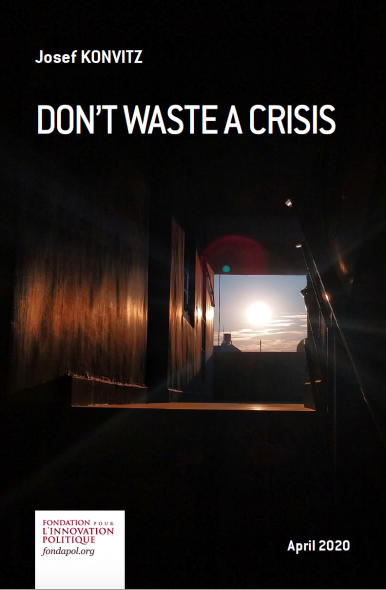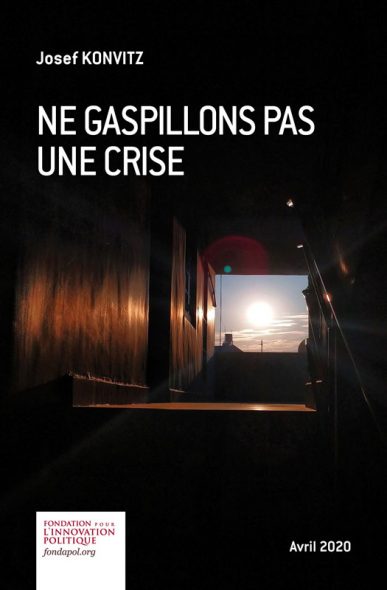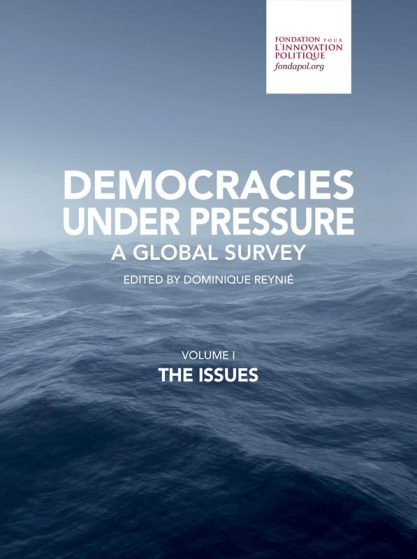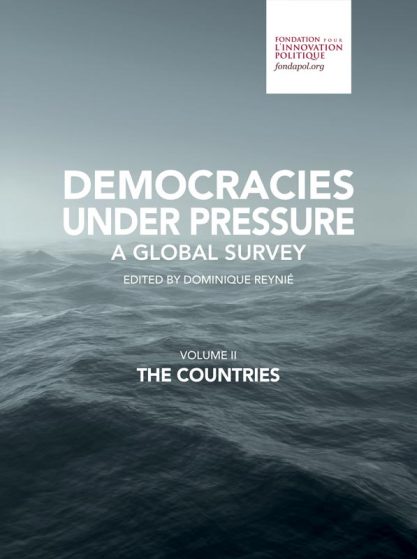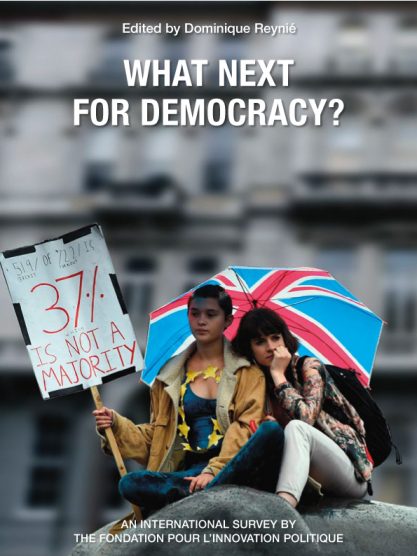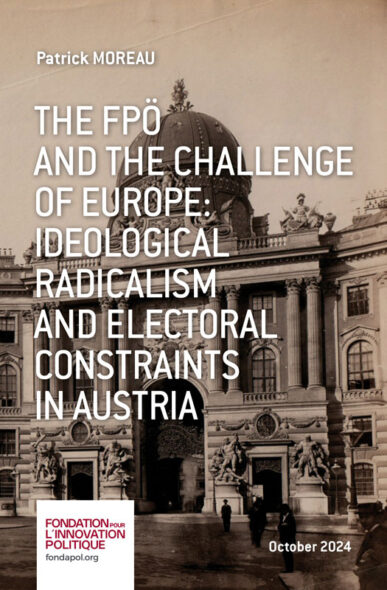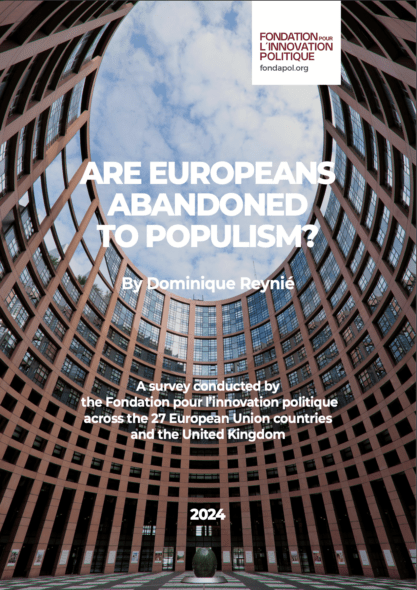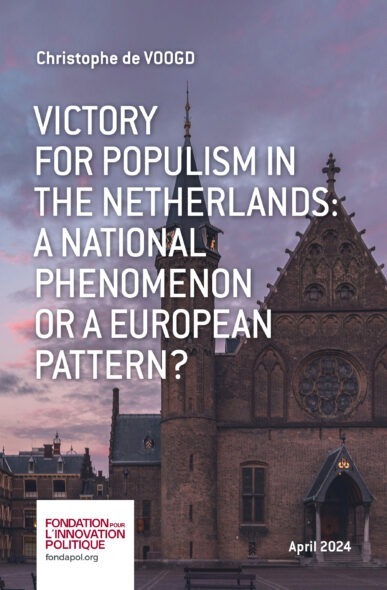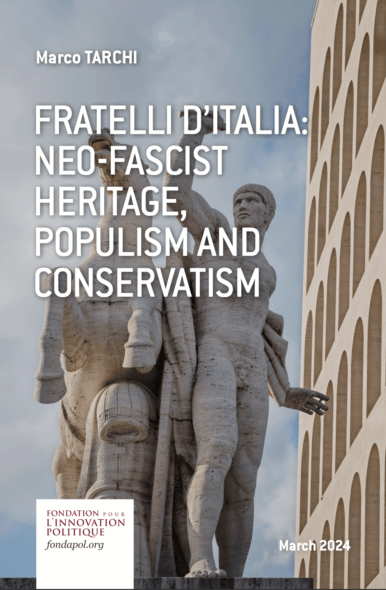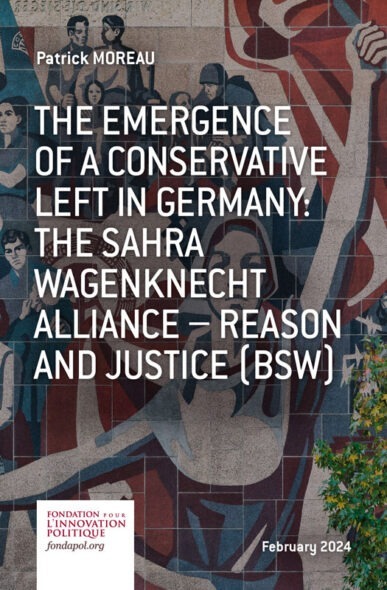Don't Waste A Crisis
Introduction
Cities are t the epicentre of the crisis
Costly lessons of the post-2008 infrastructure investment strategy
Why infrastructure matters
Cooperation and leadership Europe must step forward
Cross-border risk
Non-interference : “it’s not any affair of mine”
Borders and security – Europe is different
Conclusion
Summary
Crises bring to light strengths that were taken for granted, and weaknesses that were ignored. Countries have not invested enough for infrastructure, held back by concerns about debt; political battles over key projects and regulatory procedures only add to costs and incur delays. During the crisis we see how invaluable infrastructure is, and what the risks of under-supply are. In an urban world, everything is connected – transport, preventive health and hospitals, housing development, water and power, air quality, education. The essential tasks are to renew the stock of public goods, restructure urban regions, and reduce future economic and environmental costs. This agenda, which embraces health and climate change, must be rolled out knowing that we cannot anticipate the frequency nor the severity of future cross-border risks.
Where does this leave Europe in a world of regional blocks? The Single Market has created the second-largest economy in the world, larger than what the 27 economies of the member states would bewithout it. Labor mobility, one of the four freedoms of the Single Market, is critical to the vitality of Europe’s cities which compose the world’s largest, densest and oldest urban system. Reopening borders is just the first step, a delicate one at that. By protecting and strengthening the Single Market, including the development of strategic industries and technologies, Europe can demonstrate that cooperation among democracies works better at making societies safer.
Josef Konvitz,
Josef Konvitz retired from the OECD in 2011 as Head of the Regulatory Policy Division. He joined the OECD’s Urban Affairs Division in 1992, and led it from 1995 to 2003. Trained as an historian, Konvitz was on the faculty of Michigan State University from 1973 to 1992. He is the author of Cities and Crisis (Manchester University Press, 2016) which draws on decades of academic study of and professional engagement in managing crises. He is also an Honorary Professor at the University of Glasgow and Chair of PASCAL International Observatory.
Cities, the motors of the economy, are at the epicenter of the pandemic which has become the mother of cross-border risks. We face the future knowing that regional disparities and income inequality haveworsened in the last decade. Yet without growth, social and environmental problems will only become more costly and intractable.
When there is great suffering and uncertainty, people are conflicted between a desire to return to normality (which, after all, is familiar) and a desire to redeem the loss of life and wealth that accompanies a meta-catastrophe by making things better. Both responses are rational and understandable, and probably most of us do not want to choose one over the other. The problem is to find a workable balance.
Let me make this less abstract. What impact will the investment in infrastructure that will surely follow the COVID-19 pandemic have on the future of cities? There are already clamors to use the opportunity to accelerate the transition to cope with climate change. That option, however, would disrupt the returnto normality because it would open up possibilities for ongoing, perhaps radical change, adopting untested solutions. A climate change agenda was always going to look like that. But will a society exhausted by the pandemic embrace it? Meanwhile, others argue that it is too soon to know what the post-crisis recovery package will look like when we do not know how long the emergency will last, norwhat the prospect for economies will be. But this is not a cost-free option either.
It sounds logical to separate the emergency from a post-crisis recovery, but they are only sequential on organizational charts and budgets. This is what happened during the 2008 financial crisis, with results that help explain why the recovery was slow in coming, and weak at that. What happens during a crisis to plan for what happens after makes all the difference. We do not need pious sermonizers, but practical strategists. The post-disaster period has already begun, but we do not know it, so absorbed are we in the life-and-death struggle going on in cities around the world.
Cities are t the epicentre of the crisis
Wuhan, New York, Milan, but also Brescia, Mulhouse… The pandemic has raised a number of questions about cities and the post-crisis era.
Density: Social behavior and economic life are interdependent, shaping the mix of services and their distribution. Many global cities – both big and small – feature amenities for daily living, culture and entertainment, and mobility. What will be the demand for these facilities? And if the demand is not there, what can be done with the spaces they used? What will happen to the work force that may face long-term structural unemployment in sectors ranging from culture and sport to bars, fast food, and gourmet dining? What will be the appropriate mix on different scales?
Regulation: Zoning and other rules have shaped our cities to respond to air pollution and the threat of diseases such as cholera and tuberculosis, and to social problems such as prostitution and addiction.The distribution of schools and medical facilities has helped shape where people live and work. Whatnew regulations will help guide behavior in the future?
Work-Life Relationship: Most dwellings were not designed for tele-working, which in any caseshifts certain costs from employers to employees. Who will pay for what? What will be the demand for office space?
Data: We have already begun to see the positive and perverse effects of using big data in cities forsafety, environmental quality, traffic management, fiscal management and much else. What could be the scope for data in a society preoccupied by health? And what are the acceptable limits to the collection and use of personal data in democratic societies?
These post-pandemic issues are the same as the issues that appear on the climate change agenda (with the addition of energy). Until we accept that these and other questions have to be on the table and discussed now, there will be no long-term benefit from a post-crisis infrastructure stimulus package.
Most of the money for infrastructure is spent in cities, to be amortized over a life cyclemeasured in decades. Now is not the time to reopen sterile debates on the size of cities or the density of urban regions. I happen to believe that the problems of big cities have little to do with their size, and that dense urban regions have huge advantages. In any case, we must start where we are and with what we have.
Costly lessons of the post-2008 infrastructure investment strategy
The infrastructure stimulus that followed the 2008 financial crisis may give us some clues for the future because costly mistakes were made:
What happened?
- The funding came after it became apparent that the economy was not self- correcting;
- Much of it went unspent;
- There was a shortage of projects that went beyond bridge and road repairs, projects in other words that restructure urban regions, reduce future economic cost and environmental risks, and renew public
Why?
- National governments do not give urban affairs high priority;
- Lack of planning capacity at central and local levels;
- Regulatory requirements delayed many projects;
- Assumption that markets can allocate resources best, but
- Given the high level of uncertainty, the private sector was reluctant to invest; the public sector waited for business to take the
- Someone writing on Twitter would put: it failure of communication and a clash of expectations!
With what results?
- Europe and the United States both have one problem in common which Asia does not (or at least not to the same extent): NEET, the millions of young people who, after 2008, were not in education or employment or training, and face a greater risk of hysteresis, a labor marketphenomenon of above-average periods of unemployment (and also of diminished lifetime earnings).This generation, now several years older, has not been absorbed into the mainstream economy as weknew it (delayed first child, lower rate of home ownership).
- In the post-crisis era if another wave of people in NEET joins them, the long- term growth trend linewill remain What then are the prospects for illicit and illegal commerce? An opioid epidemic? Suicides?
- Adding to the indictment of the post-2008 recovery are the phenomena of widening regional disparities within countries, as well as widening income inequality in many but not all developed countries.
Why infrastructure matters
Am I putting too much emphasis on infrastructure? France and Italy both have significant regional disparities, but the French economy has grown in recent decades whereas the Italian economy remains at the same level from 1990. Italy has a huge housing surplus, as does France. People in Northern Italy are dispersed over a wide region, and the mortality rate has been the highest in the world. At least a million people left Paris for their country houses in the provinces, mainly to the west of France. However, the epidemic has yet not taken off in the receiving regions. Instead, this out-migration has been positive because it has reduced pressure on the intensive care units in Paris whichare overpopulated with people needing respirators. Now 2 or 3 TGV trains have been adapted to take 20 patients on ventilators from eastern France and the greater Paris region to places in France where there are hospitals with spare capacity. No surprise: the Johns Hopkins Global Health Security Index for 2019 covering 195 countries ranked France first for infrastructure capacity, Italy 66th.
Infrastructure matters – for energy, water, transport. Infrastructure investment will be part of any sound strategy to reduce the impact of any future pandemic. The cost of preparing a transition to a safer future – low carbon, better prepared for natural disasters and pandemics – will be huge. Howmuch?
In 2006, the OECD estimated that global investment in these sectors by 2030 could reach $71 trillion,or 3.5% of global GDP. In 2013, McKinsey (an American management consulting firm) increasedthat estimate to $57 trillion for the period 2013-2030, without taking climate change into account. Theunderspend then was on the order of 60%. Global GDP has now shrunk, yet the need is greater.
Moreover, so much comes down to governance, the interface between the public and the private sectors, between local, regional and national authorities, and among sectors that are not used to cooperating, such as health and education.
Take education, critical to confront regional disparities and the NEET generation. We have not yet adequately addressed the social and economic costs of the post-2008 recovery, but face the prospectthat the post-pandemic recovery will further depress living standards for some, and opportunities for many. We already know what the political consequences could be.
There is perhaps just enough time to act before the next crisis erupts. What is in the toolkit?
- Adult and lifelong education;
- Education and employment in remote places, either places that are physically far from urban cores, or places within metropolitan regions that are cut off from their surroundings.
- Universities in medium-size or intermediate cities that can connect with the people and firms around them.
Success depends on staying the course for years. Setting priorities and protecting budgets will be hard because democratically elected governments like to change priorities, and because short-term fiscal pressures will impose budget cuts.
Cooperation and leadership Europe must step forward
Ankit Panda, “Poll: Majority of Americans See US and China as Rivals”, The Diplomat, June 28th, 2019.
Alfred Crosby, America’s Forgotten Pandemic: The Influenza of 1918, Cambridge University Press, 2003.
Ibid, page 323.
Will things be better this time because the loss of life is so high, and because the crisis is global? Think of what is different now:
- The U.S. has already returned to the default position of isolation;
- Opinion surveys in the S. that show that as many Democrats as Republicans see China as a rival tothe U.S. (64% versus 65%)1;
- The S., absorbed with the economic and social costs of the crisis, lacks the resources to lead as it did after World War II. (The Marshall Plan is often invoked by people who do not know the firstthing about how it worked!)
- The Spanish flu and pneumonia killed about 550.000 people in ten months in the S. who would have lived (Against this conservative figure, the combined battle deaths of American armed forces in WorldWar I, World War II, and the Korean and Vietnamese conflicts was 423.000). After the pandemic of 1918, what did the United States do differently? Historian Alfred W. Crosby2 has the answer:nothing. It was soon forgotten except in the medical profession. “On the level of organizations and institutions – the level of collectivities – the Spanish flu had little impact. It did not spur great changes in the structure and procedures of governments, armies, corporations, or universities.”3
One reaches the sobering conclusion that the global dimension of the current pandemic will not lead to global solutions to global problems.
Let’s now switch from infrastructure investment – most of it going into cities – as part of a recovery strategy, calling attention to the costly lessons of the post-2008 stimulus packages, to the challenges of managing cross-border risks when some countries cooperate and others try to go it alone, and why this is Europe’s moment.
Making cities safer – in a world where more than half the people live in cities – should guide policy for years to come. Crises in the past – fires, wars, epidemics, even revolutions – have led to major changes in urban lifestyles, planning, construction materials, communications, transportation and logistics, information, public services. The 2020 pandemic will be no different. Europe has the world’s largest, densest and oldest network of cities. This urban network is critical to the Single Market. To reduce future economic and environmental costs, we urgently need projects that restructure urban regions and renew public goods. This agenda will not be easy to deliver, but much can be done over the nextten years, as exemplified by the transformative strategy known as “Le Grand Paris” which plans to extend public transportation to Paris’ suburbs.
Restarting the European economy calls for measures to reduce risks within Europe and elsewhere in the world that could threaten Europe in the future: representing two halves of what should be a single agenda. After the 1918 influenza, not much changed in the United States to protect against or cope with future epidemics, and the U.S. was not part of the global effort in the interwar years tooperate early-warning networks of contagious diseases. The American example in 2020 suggests thatthis time things will not be different; leadership will fall to, or be seized by, others.
Cross-border risk
The State, we are told, is back. We have heard this before, during the 2008 crisis. Then, systemic risk exposed countries whose financial markets and economies were in good shape to problems that originated elsewhere. Major changes in banking regulation followed; governments reduced their intervention in the economy as soon as it was prudent to do so, only to confront another, more severe, cross-border crisis, one which may test the strength of institutions around the world.
Simply defined, a cross-border risk occurs when a problem in one country affects the welfare and safety of people in another. COVID-19 is the most spectacular, fast-moving and lethal example of across-border risk that affects cities at a faster rate than the response time of governments:
- The epidemic’s path, which was dependent on the free movement of people, was In the beginning, who could locate Wuhan on a map? Daegu in Korea? The Lombardy region in Italy, let alone Bergamo and Brescia? Where did people go after attending an annual gathering of Evangelical Christians in Mulhouse, or Mardi Gras in New Orleans?
- Confusion marked the actions taken by many governments, uncertain whether people would act responsibly unless constrained to do so. The difference between prudence and panic was a matterof There will be a moment of reckoning, but not yet.
- Massive airlifts were needed to repatriate nationals stranded abroad, often trapped between different,conflicting sets of rules which took effect without warning. The rotation periods of tens of thousands of crews on merchant vessels around the world have been disrupted.
- Organising the supply needs of cities broke down the conventional distinction between the publicand private sectors, and brought government back into the In pre-industrial times, anepidemic during the spring planting season foretold of food shortages a year hence. Could thishappen again?
Even if some disasters cannot be predicted, we know they will occur. Disasters have become more frequent and costly since the 1980s, and their effects have been compounded by global economic interdependence.
Globalization can help promote risk awareness. Japan, which invests heavily in earthquake protection, also has an interest in how well prepared California and Italy are, for example, and invest in the factors of resilience. Why? An earthquake in California or Italy will affect the Japanese who live there, Japanese investments, and the economy in those places more generally, with consequences thatwill be felt back in Japan. And reciprocally, California and Italy are affected by measures that Japanputs in place. Compliance, however, remains a domestic responsibility, and governments treatdisasters on their territory as a sovereign matter.
Some cross-border risks do not have long-lasting effects: the failure of interdependent cross-border electricity networks which lead to blackouts, for example. Others, however, are more problematic: Vietnam’s efforts to eradicate malaria are compromised by inaction in neighboring Cambodia; forest fires in Indonesia or Brazil cause air pollution elsewhere with long-lasting effects, but there is nothing that the people whose health is affected can do about controlling the problem at its source. Climate change takes cross-border risks to the global level. It is this feeling of impotence, ofbeing an innocent victim, that translates into political pressure and builds mistrust.
A pattern emerges from a multitude of examples. In every country, people are exposed to the degree to which other countries prevent or respond to problems which cannot be contained within their borders. We are told to wear face masks as a matter of personal responsibility to other people. We haveto think the same way about catastrophes in our countries which could affect the welfare of peoplein other countries. This creates interdependence with a strong moral dimension. Joint action is nonetheless difficult: each country is exposed to a different set of cross-border risks, some far worse than others, some from neighboring countries, others from countries which are remote.
Non-interference : “it’s not any affair of mine”
Chris Andrew, The Defense of the Realm: The Authorized History of MI5, London: Penguin, 2010, p. 858.
Fear leads us to seek security where we feel we belong. The nation state can secure its borders: we are locked down where we are locked in. If travelling, we could be locked out of other countries. Yet this does not address the problem of reducing cross-border risks.
A long-term historical perspective can help us understand the problem of relying on the nation-state for protection at a time when catastrophes have become increasingly costly and frequent. Professor Christopher Andrew, with good reason, has called “Historical Attention Span Deficit Disorder… the distinguishing intellectual vice of the late twentieth and early twenty-first centuries”4.The modern nation-state emerged after the Wars of Religion and the Thirty Years War had destroyed old verities as well as laid waste to much of Germany and Central Europe. The Treaty of Westphalia of 1648, which internationalized the Rhine River and removed differences of religion as a legitimate cause for making war, restrained hegemonic powers, the states most likely to take advantage of their superiority. This was the price paid by the more powerful states to secure the cooperation of all states, big and small, in a larger system. The Westphalian settlement achieved this through theprinciple of non-intervention: states have no right to interfere in the domestic affairs of other states.
Direct intervention would be tantamount to a war-like act. Consider the questions people are already asking during this pandemic about what could have been done differently: With more information available sooner, who is responsible to act? And if action is not taken or is insufficient,what measures can other countries take? At what point can one country act to prevent or attenuate risks in another jurisdiction which could jeopardize its interests, its people, its environment, its institutions?
Nevertheless, the Westphalian system, based on the principle of non-intervention and the independence of nation-states, has already been stretched to increase security against terrorism. Just think of the millions of security checks at airports, and the information that air travelers have to provide before boarding a flight. In the effort to control the flow of funds to finance terrorism and to control money-laundering, the United States imposed obligations on domestic and foreign banks to identify the source and trace the movement of funds. This extraterritorial reach and reporting requirements add costs to financial institutions worldwide if they want to handle dollars, setting a precedent for interfering in the domestic affairs of others. Ask the Swiss. The security economy exists; the regulations that it imposes are not subject to the kind of ex ante impact assessments or ex post audits of effectiveness that are required of most economic, environmental and social regulations.
“Value for money” and cost-benefit assessments become irrelevant when security has no price. Even companies ignore this at their peril. A critical failure in a system in the Boeing 737 MAX has been traced to problems in the company’s corporate culture, to failures in internal systems whenexperts who identified problems were ignored, and to the complacency of regulators. Supply chains in Europe have been shut down; thousands of planes on order may never be built as designed, if ever. Trust was shattered; rebuilding confidence will take both time and money. The example resonates beyond airplanes: do not let the accountants have the last word. Yet cost-cutting was probably a factor behind decisions in recent years that explain why material and equipment that might have reduced the impact of the pandemic in many countries were not available.
The COVID-19 pandemic may be the most urgent but it is not the only health threat that knows no boundary. The problem is not globalization as such: nothing stopped governments in recent yearsfrom taking more measures to cope with a pandemic. As the security umbrella is opened wider to coverhealth and medical supplies more broadly, globalization itself will benefit as countries become safer to live and work in.
Borders and security – Europe is different
Anu Bradford, The Brussels Effect: How the European Union Rules the World, New York: Oxford University Press, 2020, page 24.
Sovereignty means borders which define the limits of accountability, the territorial limits to the enforcement of law. It would be nonsense to say that only nation-states exercise sovereignty. The European Union is sovereign to the extent that the jurisdiction of the European Court of Justice, the ultimate court of appeal, has precedence in the territory of its member states, and to the extent that its European regulations apply within those borders on goods and services produced within or imported into the Union.
European governments intervene in the economy in three ways: monetary policy (now dominated in Europe by the European Central Bank), fiscal policy (under the control of the member states), and regulation. Regulations at national level remain critical to structural reforms for inclusive growth, the creation and survival of SMEs, innovation, even the adoption and support of a climate change agenda. The Single Market, however, is more than the sum total of the different regulatory regimes of the 27 member states. The Single Market works because the European Commission is the source of common regulatory standards which apply to all the member states, and for that reason become the standards with which producers in other countries seeking access to the Single Market have to comply. The Single Market has made Europe the second-largest economic power in the world.
Everyone knows the four freedoms, the keys to the Single Market: goods, services, capital and labor.The pandemic struck at labor directly when borders between European states and between the EU andmost of the rest of the world were closed, with immediate consequences for the agricultural sector (1.5 million migrant workers), tourism (4.4% of GDP and 6.9% of employment), manufacturing. Health, like environmental protection, which also knows no borders, is normally an asset for Europe, but when threatened, a risk to it. Health is a competence of member states, but medicalservices and products are regulated in the Single Market. This calls for collective action, beginning with support for Europe’s laboratories and for expanding the capacity to produce vaccines, medicine and medical equipment.
In a new book on the global reach of European regulation released before the pandemic, Professor Anu Bradford of Columbia Law School wrote: “Embracing the role of a regulatory hegemon reinforces the EU’s identity and enhances the EU’s global standing even in the times of crises where its effectiveness and relevance are constantly being questioned.”5 Yet regulation has not figured prominently in discussions about what the European Union should do, an agenda that has been dominated by questions about finance. Regulation to restore health and reduce future risks protects the Single Market. How can Europe rise to the challenge?
The European Council, the European Commission, the European Parliament and the member states should make it clear that their overriding objective is to secure conditions that permit all four freedoms of the Single Market to function, including free movement within the Schengen Zone. People will go back to work when they feel as safe at work and to travel as they do at home. Work place safety is already addressed in European regulations, but may no longer be enough to assure labor mobility. International education and the Erasmus Programme are an investment in Europe’s future. Mobility is essential to the cultural and natural assets that represent Europe’s wealth and supports millions of jobs; it is vital to the millions of families holding more than one European nationality. The crisis will be over when family reunions and weddings can be held, and when festivals, museums, concert venues and parks –not just stores, factories, offices, schools and universities reopen. This strategic – even existential objective – will absorb 2020-21, or until we are free to travel again.
Reopening the borders will only be the beginning of a longer-term effort. Now and for the medium-term, an investment strategy for Europe must:
- adapt cities and towns to new work-life Urban and regional design, the distribution of schools and medical facilities, the demand for workplaces, the redesign of housing, transportation, the use of data – all will be part of an agenda focusing on health and the environment calling for infrastructure investment, perhaps with a leading role for the European Investment Bank.
- address social problems of the ageing and the vulnerable, especially people who are isolated, self-employed, migrants, European citizens wherever they Burdens must be distributed fairly.Protect European citizens and they will want to belong to Europe.
- secure the rights of Europeans to privacy, dignity, the rule of law and democratic participation.This will be especially important if and when new procedures are introduced to monitor thesituation (data protection comes to mind), to revive the economy, and to mobilize society in afuture Accountability is critical to the confidence of citizens in government.
There is nothing radically new in these objectives which reflect the foundational values of the single market. Technocratic? Perhaps. Competent government may sound boring, but think of the alternative. To respond to the challenges of an unprecedented crisis, Europe must capitalize on what it already does well at a world-class level. There is a dual logic: Although many actions take place atthe local, regional and national level, Europe must become the frame of reference.
Finally, Europe has a vital interest in how countries that trade with Europe manage and reduce risks. Development assistance has long been a strategy to help poorer countries improve living conditions, lest social and environmental problems “spill over”. We must be concerned about what the pandemic and its economic consequences portend for the stability of many countries in other parts of the world with which Europe has Partnership and Cooperative Agreements. Again, it is a question of extending Europe’s existing policy framework to meet the need.
Those in Europe with the power to do the right thing now also have the power to do too little, or to takethe wrong approach. Today, Europe faces a biological threat. How can Europe confront other threats, even a geopolitical (or military threat) in the future if it emerges from this crisis more fragile, less cohesive, more vulnerable?
Visibility and leadership are at a premium. To mobilize the resources of the European institutions and the talents of nearly 450 million people, not just for COVID-19 but for other catastrophes, Europe needs to improve the capacity of member states to confront and recover from crises. Institutions are an endowment, an investment like insurance, to help us prepare for disasters. Consideration should be given to establish:
- European Agency for Resilience and Recovery – with a fund – to help identify and remedy deficiencies at national and subnational levels, and a
- European Academy for Crisis Management to codify the lessons learned, make information available, and train people in the public and private sectors, researchers and experts to collaborate in emergencies.
A European strategy for “reinforced cohesion”, in pursuit of “an ever closer Union” will only be proven if it works better in the next crisis. And there will be another. Faced with the prospect of global fragmentation into two or more blocks to prepare for and respond to crises, one group of nations directed toward more cooperation, and the other toward less, Europe’s position must be clear, constructive, compelling, or in other words, with a vision, the means to get things done, and eventually results that make the lives of Europeans both better and safer.

